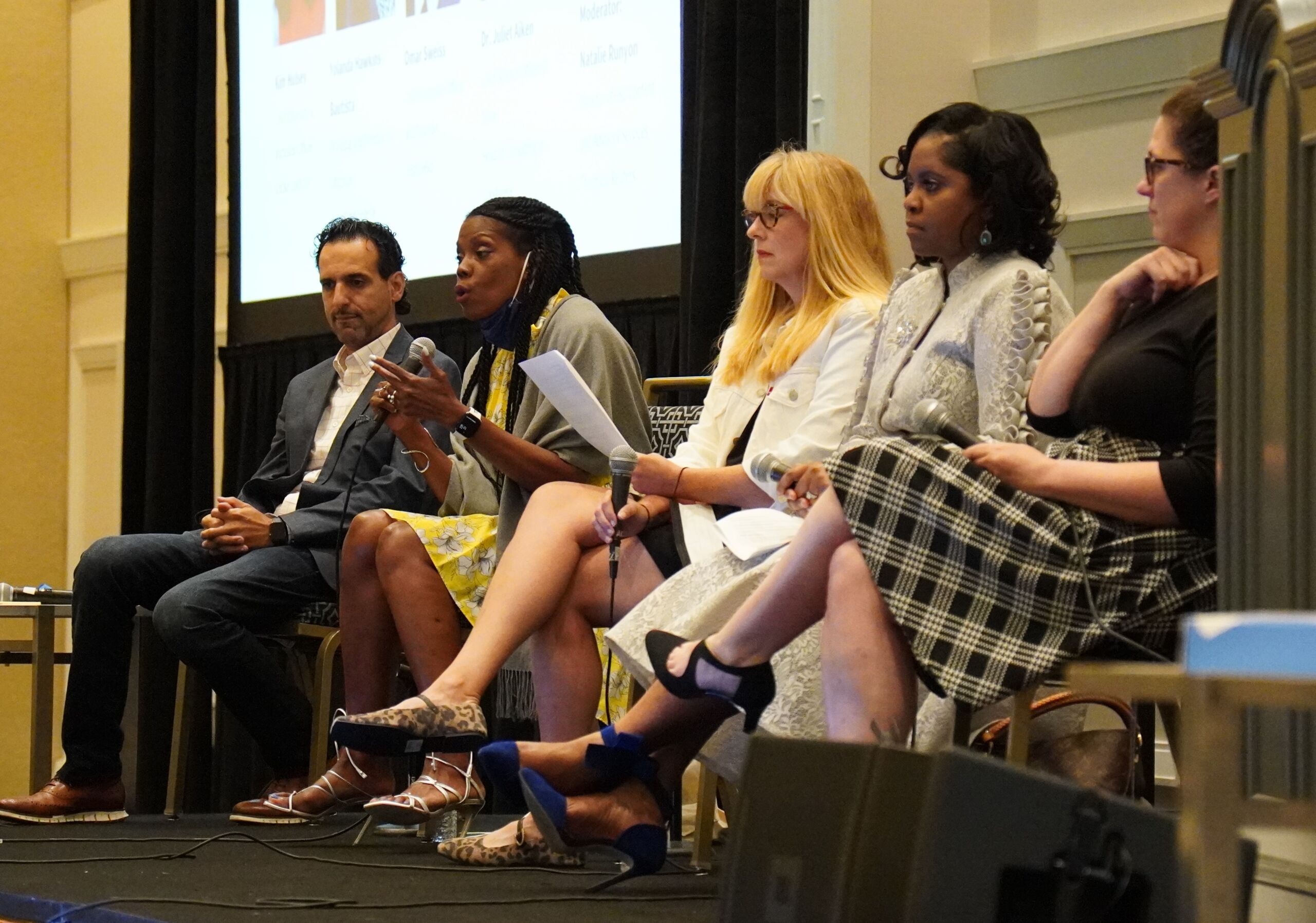The organizations that both integrate quantitative DEI data into the organization and formulate it into a long-term plan will have a leg up, said panelists at ILTACON
NATIONAL HARBOR, Maryland — Historically, the state of diversity and inclusion in the legal industry has been rather poor. Indeed, a survey from the National Association for Law Placement noted that roughly 4% of firm partners in 2021 were women of color, with men of color not being represented much better, at just over 5%.
To change this paradigm over Diversity, Equity & Inclusion (DEI) initiatives, it will require data, explained panelists at the 2022 International Legal Technology Association Conference (ILTACON). However, not only does that data need to be collected in a sound and privacy-centric way, but organizations need to learn how to actually transform that data into meaningful action.
The collection question
For panelist Kim Hulsey, chief diversity & inclusion officer at Locke Lord, data serves two primary purposes. The first is rather simple: knowing “who’s in the building”, which means combing HR data to identify the level of diversity across different communities, including gender, ethnic & racial minorities, disability communities, and LGBTQ+ communities.
From there, organizations are now looking to take the next step, she said. “Now that we know who’s in the building, 1) how can we keep you there; and 2) how can we give you the best experience?” By experience, Hulsey said she wants to know what type of assignments diverse attorneys are receiving and how they are being selected for matters — essentially “how well are we delivering the promise that we made to you.”
You are never going to see change unless you know exactly what you’re trying to do.
Collecting that sort of data isn’t easy, however; and Hulsey noted that currently, the collection of data concerning employee experience is often a qualitative process that includes interviews and conversations, which naturally “takes a lot of time, both my time as a diversity leader and the time of the people that I’m speaking to.” Hulsey says she’s looking at integrating more quantitative data into the equation, considering not only surveys, but also internal data such as work allocation systems.
It’s a path that another panelist, Yolanda Hawkins-Bautista, has recently traveled, although not without some bumps. Hawkins-Bautista was recently named Principal and Director of Litigation and Investigations at Accenture Federal Services, but before that, she worked at Freddie Mac. It was there that she helped build a program called Engage Excellence — originally started by the Minority Corporate Counsel Association and then adapted by Freddie Mac’s legal department — which was aimed at applying specific guidelines for increasing diversity at outside counsel partners.
Following an initial survey to establish a data baseline, Hawkins-Bautista noted that the next step was to make the data actionable. “We actually sat down, we graded them, we had full discussions back and forth, and then we met with each law firm for about two hours telling them what we like, what we don’t like, and changes we wanted them to make,” she noted.
Freddie Mac’s then-general counsel would then spearhead a development plan for these outside firms, at which after a year, if they “have a plan we’ll continue working together, if not we’ll begin cycling the firm off our matters,” Hawkins-Bautista said. “You have to first identify where the problem lies, and then address it.”
Indeed, planning up front is a crucial piece to the data collection and implementation process, added panelist Dr. Juliet Aiken, chief science officer at Thine and head of consulting at Conducere. Aiken stressed that the letters in DEI are often conflated, but just because an organization is bringing in diverse talent doesn’t necessarily mean they’re committing to their inclusion. A firmwide plan at the beginning of the process can help avoid that pitfall.
“You are never going to see change unless you know exactly what you’re trying to do,” Aiken added.
Of course, this planning can take time. Hulsey noted that she often gets tons of emails about tech products that can possibly help, but with so much work, her biggest challenge is simply “getting to a place where I can articulate what the need is, then easily understand the products that are available and map the need to the product.”
However, this is where technologists and IT professionals can play a crucial role, Hawkins-Bautista added. With so much help needed for chief diversity officers and similar roles, IT professionals who help develop the DEI data systems “will be in the executive meetings.” In addition to helping the organization, finding success with these tech innovations can be a useful resume booster as well.
Data as strategy
Once the data is collected and integrated into the organization, it can then become not only a useful internal tool for engagement and recruitment, but a way to transform external processes as well. For example, Freddie Mac had a problem with both supplier spend and supplier diversity. Following a conversation with her then-GC, Hawkins-Bautista implemented a policy that would make it mandatory for Freddie Mac’s in-house attorneys to consider diverse attorneys and diverse-owned firms when engaging outside counsel. Once in-house attorneys identified outside counsel, they had to submit a request for approval through a system created by IT that sent an automatic notification to the firm’s DEI Council leadership to evaluate the proposed outside counsel.
What Hawkins-Bautista found was a change in the legal department’s mindset as well, recalling that she had conversations where attorneys would tell her, “If we had not had this program in place, I wouldn’t have considered somebody else. I would have just continued working with the firm that we’ve worked with for 40 years.” The new process, however, made the legal team realize that there’s a lot of talent out there. Oftentimes, “we found that when they considered other folks, they went ahead and hired them.”

On the outside counsel side, Hulsey said her firm is working to build out diversity dashboards, which integrate disparate sources of data into one place for the firm. Rather than simply a technology problem, she said, the firm views this dashboard as a strategic initiative.
All of this stuff is meaningful for two reasons, Hulsey explained: One, because clients are asking about it; and two, because of the Mansfield Rule reporting, that information is necessary. And while the process is manual right now, the plan is “to have a much more automated process that is less subject to human error,” she said.
Panelist Omar Sweiss, founder and CEO of diversity analytics company JusticeBid, added that in his conversations with clients, “data is only one piece of the equation.” Although DEI metrics are largely poor across the board, he said, talking about strategies to increase diversity can also have the effect of encouraging more disclosure in the first place.
“It’s progress over punishment. The entire ecosystem has to get better,” Sweiss added. “So, what can we do to collaborate better and work together to push this forward?”
Hawkins-Bautista agreed, noting that in her conversations with outside counsel, she encourages firms to be transparent. “Don’t hide the numbers. Find a way to embrace them and move forward.”
Plus, Aiken explained, a holistic strategy can help organizations avoid the “checked box” problem, in which organization leaders can collect data, and perhaps even reach their preferred diversity metrics, then put the problem aside.
“Do not take these metrics as hurdles that can be passed,” Aiken said. “They are ways for us to monitor our progress in work that should continue over many lifetimes.”







